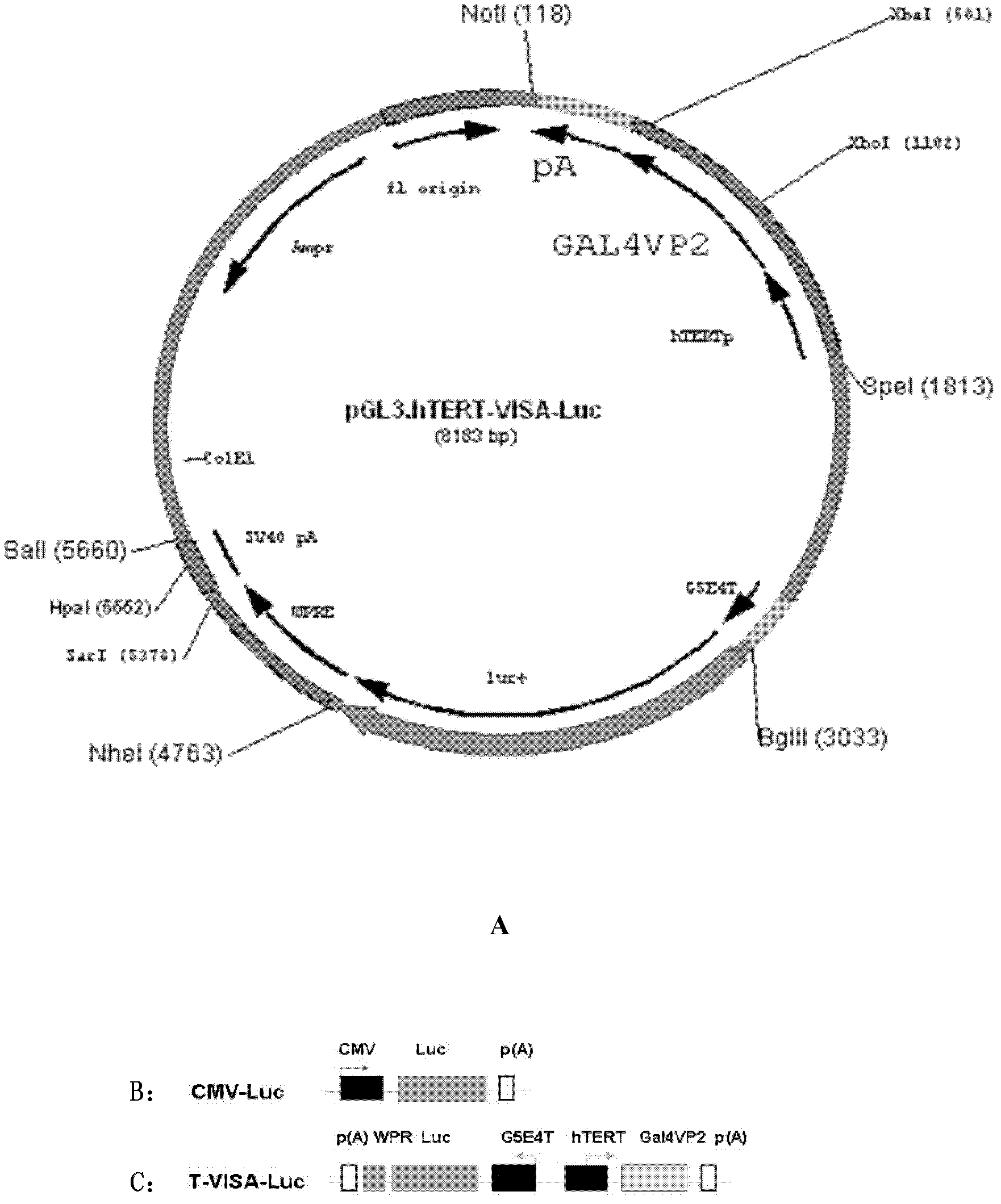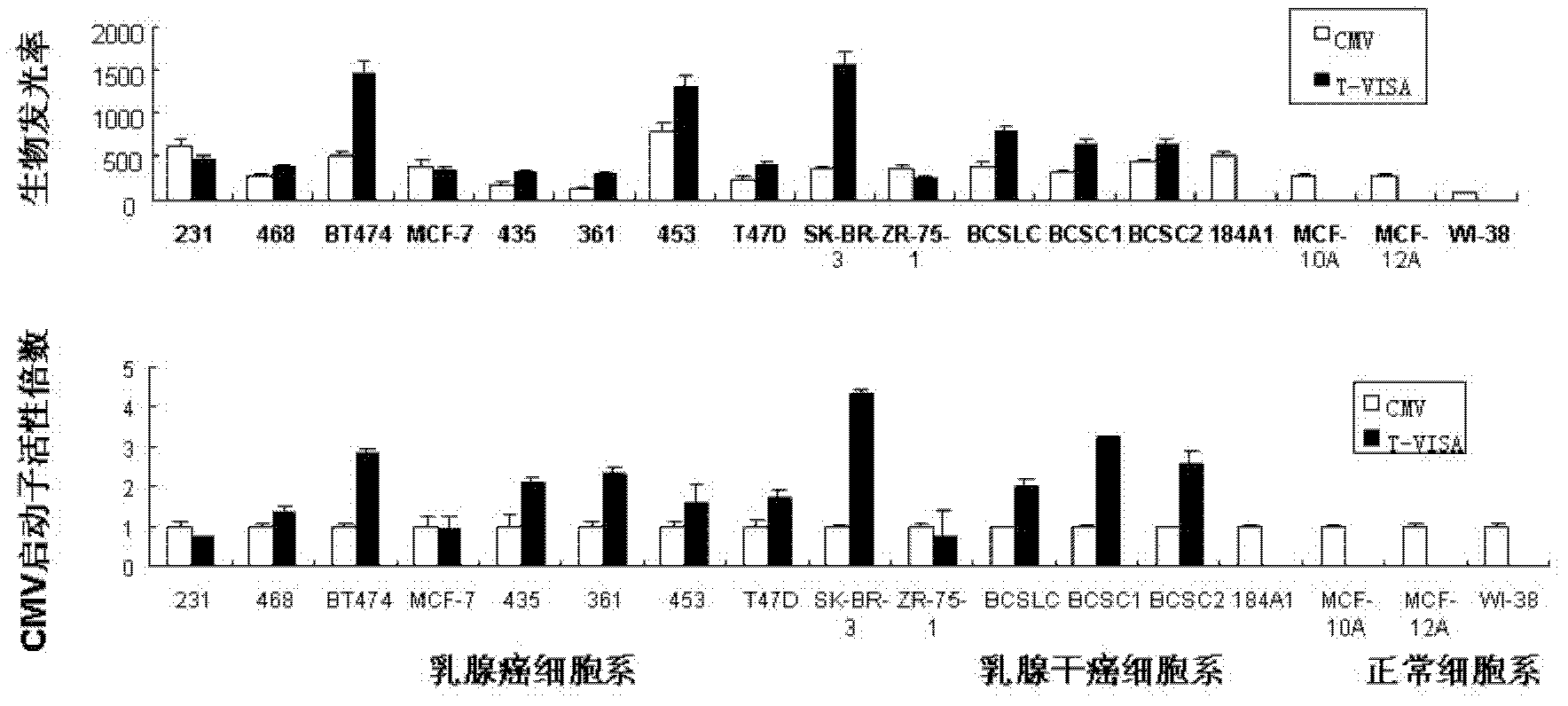Carrier T-VISA for expressing target genes at high efficiency and high specificity in tumor cells
A tumor cell and target gene technology, applied in the field of biomedicine, can solve the problems of large toxic and side effects, low activity and limited efficacy
- Summary
- Abstract
- Description
- Claims
- Application Information
AI Technical Summary
Problems solved by technology
Method used
Image
Examples
Embodiment 1
[0017] 1. T-VISA carrier:
[0018] Clone the telomerase promoter hTERT, the length is 418bp, its sequence is shown in SEQ ID NO.2, it has tumor cell specificity, but its activity is less than 1% of CMV promoter activity in tumor cells, so it cannot be widely used . Insert the promoter into the TSTA basic plasmid promoter sequence to form T-TSTA, and then insert WPRE into the 3'-UTR of the target gene in T-TSTA, which can enhance the stability of mRNA, thus constructing hTERT-VP16-GAL4 -WPRE (VP16-GAL4-WPRE Integrated Systemic Amplifier, VISA, Integrated Systemic Amplifier) regulatory system, referred to as T-VISA (Integrated Systemic Amplifier) vector, its sequence is shown in SEQ ID NO.1.
[0019] In the T-VISA vector, the hTERT promoter controls the Gal4-VP2 (two copies of VP16, with strong transcriptional activation properties) fusion protein gene; the Gal4-VP2 fusion protein combines with the Gal4 response element G5E4T to activate the target gene or gene of interest ...
PUM
 Login to View More
Login to View More Abstract
Description
Claims
Application Information
 Login to View More
Login to View More - R&D
- Intellectual Property
- Life Sciences
- Materials
- Tech Scout
- Unparalleled Data Quality
- Higher Quality Content
- 60% Fewer Hallucinations
Browse by: Latest US Patents, China's latest patents, Technical Efficacy Thesaurus, Application Domain, Technology Topic, Popular Technical Reports.
© 2025 PatSnap. All rights reserved.Legal|Privacy policy|Modern Slavery Act Transparency Statement|Sitemap|About US| Contact US: help@patsnap.com



